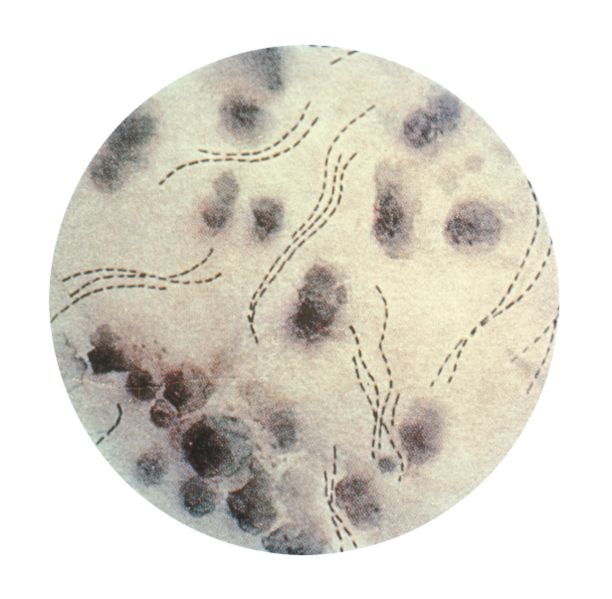Chancroid: Difference between revisions
Jump to navigation
Jump to search
m (Bot: Automated text replacement (-{{SIB}} + & -{{EH}} + & -{{EJ}} + & -{{Editor Help}} + & -{{Editor Join}} +)) |
Rim Halaby (talk | contribs) No edit summary |
||
| Line 9: | Line 9: | ||
OMIM = | | OMIM = | | ||
MedlinePlus = 000635 | | MedlinePlus = 000635 | | ||
eMedicineSubj = | eMedicineSubj = | ||
eMedicineTopic = | eMedicineTopic = | ||
MeshID = D002602 | | MeshID = D002602 | | ||
}} | }} | ||
{{ | {{Chancroid}} | ||
'''==[[Chancroid overview|Overview]]== | |||
==[[Chancroid historical perspective|Historical Perspective]]== | |||
==[[Chancroid classification|Classification]]== | |||
== | ==[[Chancroid pathophysiology|Pathophysiology]]== | ||
==[[Chancroid causes|Causes]]== | |||
==[[Chancroid differential diagnosis|Differentiating Chancroid from other Diseases]]== | |||
==[[Chancroid epidemiology and demographics|Epidemiology and Demographics]]== | |||
== | ==[[Chancroid risk factors|Risk Factors]]== | ||
==[[Chancroid screening|Screening]]== | |||
==[[Chancroid natural history, complications and prognosis|Natural History, Complications and Prognosis]]== | |||
==Diagnosis== | |||
[[Chancroid diagnostic criteria|Diagnostic Criteria]] | [[Chancroid history and symptoms|History and Symptoms]] | [[Chancroid physical examination|Physical Examination]] | [[Chancroid laboratory findings|Laboratory Findings]] | [[Chancroid electrocardiogram|EKG]] | [[Chancroid CT|CT]] | [[Chancroid MRI|MRI]] | [[Chancroid echocardiography or ultrasound|Echocardiography or Ultrasound]] | [[Chancroid other imaging findings|Other Imaging Findings]] | [[Chancroid other diagnostic studies|Other Diagnostic Studies]] | |||
==Treatment== | ==Treatment== | ||
[[Chancroid medical therapy|Medical Therapy]] | [[Chancroid surgery|Surgery]] | [[Chancroid primary prevention|Primary Prevention]] | [[Chancroid secondary prevention|Secondary Prevention]] | [[Chancroid cost-effectiveness of therapy|Cost-Effectiveness of Therapy]] | [[Chancroid future or investigational therapies|Future or Investigational Therapies]] | |||
==External links== | ==Case Studies== | ||
[[Chancroid case study one|Case #1]] | |||
'''==External links== | |||
*[http://today.reuters.com/news/newsArticle.aspx?type=healthNews&storyID=2006-05-12T224644Z_01_DIS281852_RTRUKOC_0_US-CHANCROID-VACCINE.xml Chancroid vaccine promising in pigs] in Reuters Health | *[http://today.reuters.com/news/newsArticle.aspx?type=healthNews&storyID=2006-05-12T224644Z_01_DIS281852_RTRUKOC_0_US-CHANCROID-VACCINE.xml Chancroid vaccine promising in pigs] in Reuters Health | ||
| Line 94: | Line 71: | ||
[[tr:Şankroid]] | [[tr:Şankroid]] | ||
{{WikiDoc Help Menu}} | {{WikiDoc Help Menu}} | ||
{{WikiDoc Sources}} | {{WikiDoc Sources}} | ||
Revision as of 20:58, 1 October 2012
| Chancroid | |
 | |
|---|---|
| Photomicrograph of H. ducreyi | |
| ICD-10 | A57 |
| ICD-9 | 099.0 |
| DiseasesDB | 5563 |
| MedlinePlus | 000635 |
| eMedicine | [http://www.emedicine.com/eMedicineTopic =
MeshID = D002602/topic{{{eMedicineTopic}}}.htm eMedicineTopic =
MeshID = D002602/{{{eMedicineTopic}}}]
|
|
Chancroid Microchapters |
|
Diagnosis |
|---|
|
Treatment |
|
Case Studies |
|
Chancroid On the Web |
|
American Roentgen Ray Society Images of Chancroid |
==Overview==
Historical Perspective
Classification
Pathophysiology
Causes
Differentiating Chancroid from other Diseases
Epidemiology and Demographics
Risk Factors
Screening
Natural History, Complications and Prognosis
Diagnosis
Diagnostic Criteria | History and Symptoms | Physical Examination | Laboratory Findings | EKG | CT | MRI | Echocardiography or Ultrasound | Other Imaging Findings | Other Diagnostic Studies
Treatment
Medical Therapy | Surgery | Primary Prevention | Secondary Prevention | Cost-Effectiveness of Therapy | Future or Investigational Therapies
Case Studies
Case #1 ==External links==
- Chancroid vaccine promising in pigs in Reuters Health
de:Ulcus molle dv:ޝެންކްރޮއިޑް id:Syankroid it:Ulcera venerea he:צ'נקרואיד la:Ulcus molle nl:Ulcus molle fi:Pehmeä sankkeri sv:Mjuk schanker